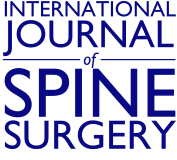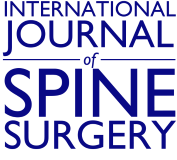Abstract
Background The influence of interbody cage positioning on clinical outcomes following lumbar interbody fusion is not well understood, though it has been hypothesized to play a significant role in stability of the treated level. The purpose of this study was to evaluate any correlations between cage placement in TLIF procedures and post-operative kinematics.
Methods Thirteen patients who had previously undergone a TLIF procedure were evaluated using the Vertebral Motion Analysis (VMA) system, an automated fluoroscopic method of tracking kinematics in vivo. Upright and recumbent bending platforms were used to guide patients through a set range of motion (ROM) standing up and lying down, respectively, in both flexion-extension (FE) and lateral bending (LB). Intervertebral ROM was measured via fluoroscopic images captured sequentially throughout the movement. DICOM images acquired by the VMA system were used to calculate cage positioning. Intra-rater and inter-rater reliability of TLIF cage position were also assessed.
Results Statistically significant correlations were noted between sagittal cage position and lying LB (r = -0.583, p = 0.047), and coronal cage positioning with both standing (r = 0.672, p = 0.012) and lying LB (r = 0.632, p = 0.027). Additionally, the correlation between sagittal cage position and standing FE was trending towards significance (r = -0.542, p = 0.055).
Conclusions The intuitive correlation between coronal cage position and both standing and lying lateral bending ROM is supported by the data from this study, suggesting placement closer to midline is optimal for stability. Additionally, the VMA system appears to be a sensitive and repeatable means to obtain information on postoperative kinematic outcomes. Further work to establish the relationship between cage placement, these kinematic outcomes and, potentially, functional pain outcomes seems to be warranted based on the results obtained here.
- Copyright © 2015 ISASS - This manuscript is generously published free of charge by ISASS, the International Society for the Advancement of Spine Surgery







